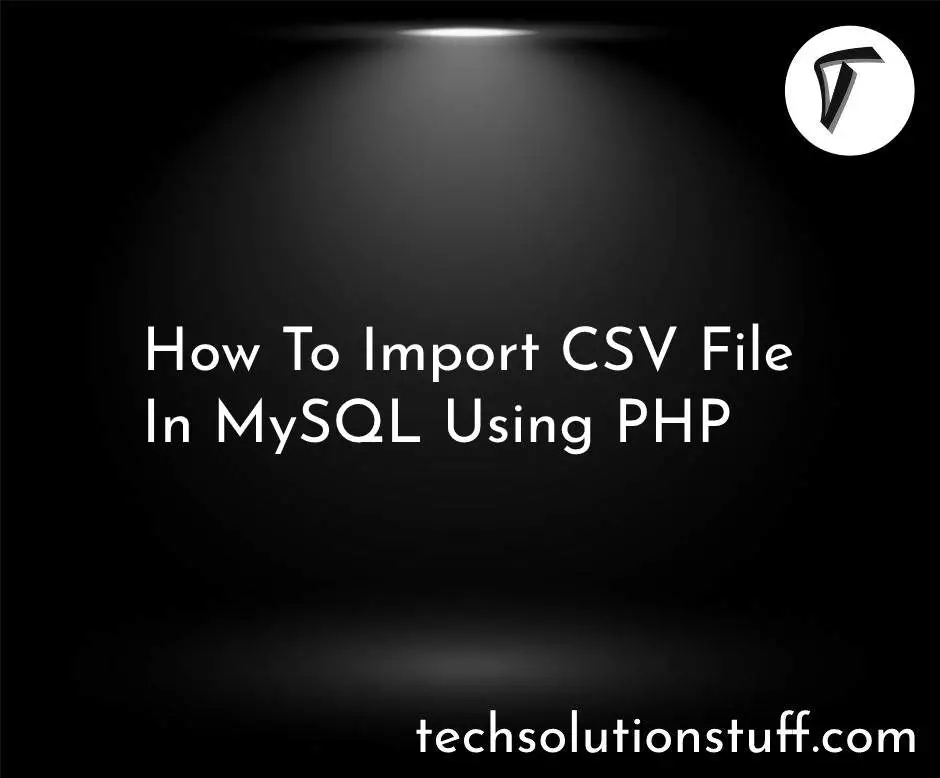How to Display Relationship Data into Yajra Datatables?
I can help you write a step-by-step guide on how to display relationship data using Yajra DataTables in Laravel. Yajra DataTables is a powerful package that allows you to create interactive and feature-rich data tables. In this guide, we'll focus on displaying data from Eloquent model relationships within DataTables.
When building data tables for your Laravel application, you often encounter situations where you need to display related data from Eloquent model relationships. Yajra DataTables, a popular package for creating dynamic and interactive tables, can help you achieve this effortlessly.
In this step-by-step guide, we'll explore how to display relationship data using Yajra DataTables in Laravel 9/10.
So, let's see how to display relationship data into yajra datatables, yajra datatables with relationship laravel 10, laravel 10 yajra datatables, eager loading relationships.
In this step, we will install laravel 10 using the following composer command.
composer create-project --prefer-dist laravel/laravel datatable-example
Configure Database connection in .env file.
DB_CONNECTION=mysql
DB_HOST=127.0.0.1
DB_PORT=3306
DB_DATABASE=database_name
DB_USERNAME=database_username
DB_PASSWORD=database_password
Install the Yajra DataTables package using the following composer command.
composer require yajra/laravel-datatables-oracle
Now, we will create migration and modal using the following command.
php artisan make:modal Post -m
Migration:
<?php
use Illuminate\Database\Migrations\Migration;
use Illuminate\Database\Schema\Blueprint;
use Illuminate\Support\Facades\Schema;
class CreatePostsTable extends Migration
{
/**
* Run the migrations.
*
* @return void
*/
public function up()
{
Schema::create('posts', function (Blueprint $table) {
$table->id();
$table->integer('user_id');
$table->string('title');
$table->timestamps();
});
}
/**
* Reverse the migrations.
*
* @return void
*/
public function down()
{
Schema::dropIfExists('posts');
}
}
Migrate the table to the database using the following command.
php artisan migrate
Open the Post.php model and modify the following changes.
app/Models/Post.php
<?php
namespace App;
use Illuminate\Database\Eloquent\Model;
use App\Models\User;
class Post extends Model
{
protected $fillable = ['title'];
public function users()
{
return $this->belongsTo(User::class,'user_id','id');
}
}
Next, open your routes/web.php file and add the following routes.
Route::get('posts','PostController@index')->name('posts.index');
Now, we will create a controller using the following command.
php artisan make:controller PostController
PostController.php
<?php
namespace App\Http\Controllers;
use Illuminate\Http\Request;
use App\User;
use App\Post;
use DataTables;
class PostController extends Controller
{
/**
* Show the application dashboard.
*
* @return \Illuminate\Contracts\Support\Renderable
*/
public function index(Request $request)
{
if ($request->ajax()) {
$model = Post::with('users');
return DataTables::eloquent($model)
->addColumn('users', function (Post $post) {
return $post->users->name;
})
->toJson();
}
return view('users');
}
}
In your Blade view, include the DataTable HTML with the defined route and JavaScript to initialize the table.
<!DOCTYPE html>
<html>
<head>
<title>How to Display Relationship Data into Yajra Datatables? - Techsolutionstuff</title>
<link rel="stylesheet" href="https://cdnjs.cloudflare.com/ajax/libs/twitter-bootstrap/4.1.3/css/bootstrap.min.css" />
<link href="https://cdn.datatables.net/1.10.16/css/jquery.dataTables.min.css" rel="stylesheet">
<link href="https://cdn.datatables.net/1.10.19/css/dataTables.bootstrap4.min.css" rel="stylesheet">
<script src="https://ajax.googleapis.com/ajax/libs/jquery/1.9.1/jquery.js"></script>
<script src="https://cdnjs.cloudflare.com/ajax/libs/jquery-validate/1.19.0/jquery.validate.js"></script>
<script src="https://cdn.datatables.net/1.10.16/js/jquery.dataTables.min.js"></script>
<script src="https://stackpath.bootstrapcdn.com/bootstrap/4.1.3/js/bootstrap.min.js"></script>
<script src="https://cdn.datatables.net/1.10.19/js/dataTables.bootstrap4.min.js"></script>
<style type="text/css">
.paginate_button{
padding: 0px !important;
}
</style>
</head>
<body>
<div class="container" style="margin-top: 100px;margin-bottom: 100px; ">
<div class="row justify-content-center">
<div class="col-md-8">
<div class="card">
<div class="card-header bg-info text-white">How to Display Relationship
Data into Yajra Datatables? - Techsolutionstuff</div>
<div class="card-body">
@if (session('status'))
<div class="alert alert-success" role="alert">
{{ session('status') }}
</div>
@endif
<table class="table table-bordered data-table">
<thead>
<tr>
<th>No</th>
<th>Title</th>
<th>Auther</th>
</tr>
</thead>
<tbody>
</tbody>
</table>
</div>
</div>
</div>
</div>
</div>
<script type="text/javascript">
$(document).ready(function() {
$('.data-table').DataTable({
processing: true,
serverSide: true,
ajax: "{{ route('posts.index') }}",
columns: [
{data: 'id', name: 'id'},
{data: 'title', name: 'title'},
{data: 'users', name: 'users.name'},
]
});
});
</script>
</body>
</html>
Now, run the laravel application using the following command.
php artisan serve
By following these steps, you can seamlessly display related data from Eloquent model relationships in Yajra DataTables within your Laravel application. This powerful combination allows you to create interactive data tables that present complex relationships with ease.
You might also like:
- Read Also: Composer is not Recognized as an Internal or External Command
- Read Also: How To Add Bootstrap 5 Datepicker
- Read Also: How To Integrate Stripe Payment Gateway In Laravel 8
- Read Also: How To Import CSV File In MySQL Using PHP








